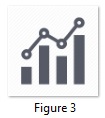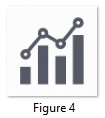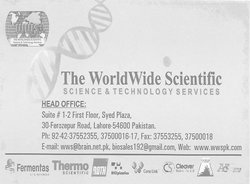Full Length Research Article
Gram Negative bacteria and their Antibiotic Resistance: A Bibliometric Analysis
Jamila Ahmed1,2, Saima Nasir2, Ikram Ullah1, Farhan Younas1*
Adv. life sci., vol. 10, no. 4, pp. 651-656, December 2023
*- Corresponding Author: Farhan Younas (farhan.younas@iiu.edu.pk)
Authors' Affiliations
2. ORIC, Allama Iqbal Open University, Islamabad – Pakistan
[Date Received: 23/12/2022; Date Revised: 21/10/2023; Date Published Online: 31/12/2023; Date Updated:09/09/2025]
Abstract![]()
Introduction
Methods
Results
Discussion
References
Abstract
Background: Antibiotics are compounds made from microorganisms that destroy or prevent the growth of other microbes. The constant failure to engineer new antibiotics and the imprudent usage of antibiotics have resulted in the rise of antibiotic resistance. In 2017, the World Health Organization released a list of the most pathogenic bacteria having the highest resistance against antibiotics, which also included many Gram-negative bacteria. In this study, we reviewed the data on publications on antibiotic-resistant (ABR) Gram-negative bacteria by bibliometrics.
Methods: The data from 2003 to 2022 were retrieved from the Web of Science and used further for statistical analysis. Both qualitative and quantitative analyses of the characteristics of publications, authors, top countries, leading journals, funding agencies, and collaboration aspects.
Result: The results showed a total of 10,350 publications with a 7.94% annual growth rate in a linear pattern and 23.71 average citations per document on the subject. Lists of the most cited papers and papers with ranking by highest total citations per year were also retrieved. 98% of articles were published in English. Greater research output is from developed countries, i.e., the USA, China, India, England, Spain, Iran, Italy, Germany, and Japan. The USA has the highest number of publications, citations, and single-country publications. The USA is also the top country to have the highest collaborations with other countries.
Conclusion: The study is suggestive for most developing and least developed countries to establish collaborations with researchers from developed countries, especially the USA and UK, which have dominance in research productivity and sources of funding. The results of this study may provide potential prospects for the study of ABR Gram-negative bacteria in the future.
Keywords: Antibiotic resistance; Gram-negative bacterial; OmpC; OmpF; PCR
Antibiotic resistance has emerged as one of the leading public health threats of the 21st century. Bacteria are developing resistance towards antibiotics at an alarming rate [1,2]. Constant failure to engineer new antibiotics and imprudent usage of antibiotics are the primary reasons behind the rise of antibiotic resistance [3]. Resistant Gram-negative bacteria are the real threat and contributing factors in sinking health and economic status around the globe. ABR Gram-negative pathogens have acquired resistance to almost all antibacterial medications available, resulting in pre-antibiotic era circumstances [4,5]. The development of multidrug-resistant (MDR) Gram-negative bacteria has significantly affected the antibiotic potential. Agents of highest concern are the Gram-negative contagions found in medical settings. Acinetobacter species, P. aeruginosa, and Enterobacteriaceae (mostly K. pneumoniae) are primarily responsible for these. MDR Gram-negative bacteria, such as beta-lactamase-producing E. coli and N. gonorrhoeae, are also spreading rapidly among people [5].
In 2017, the World Health Organization (WHO) released a list of bacteria requiring novel antibiotics on an emergency basis to stop their emergence. WHO has grouped these bacteria according to their resistance severity and named them as critical, high, and medium. Critical gram-negative bacteria include Acinetobacter baumannii, Pseudomonas aeruginosa, and Enterobacteriaceae. The high-priority list consists of ABR Helicobacter pylori, Campylobacter spp., Salmonellae, and Neisseria gonorrhoeae, while Haemophilus influenzae and Shigella spp. are listed in the medium-priority list [6].
Bibliometric analysis is the most common methodology used in research to assess a specific topic and the research conducted on it [7, 8]. It gives us information about the most prominent countries, the top funding organizations, and the top contributing authors [9, 10]. It also presents year-wise growth of publications and international collaboration. In some bibliometric studies, co-occurrence maps are developed to present bibliometric indicators such as the most used keywords or countries' collaboration. This type of analysis also identifies dominant areas of past research by analyzing the most-cited work. This can be helpful to predict future research trends in the same field. Web of Science is the most common source for such studies, but some researchers also use other platforms like PubMed, Google Scholar, and Scopus. Basic data is retrieved from these sources and then analyzed further through different software.
Numerous bibliometric studies on different kinds of pathogens [11-12] and other microbiology fields have been published [13-15]. However, no bibliometric investigations have been carried out on ABR Gram-negative bacteria. Therefore, this analysis was conducted to analyze and show bibliometric indicators related to literature on ABR Gram-negative bacteria.
In this study, we reviewed the publication data on ABR Gram-negative bacteria by bibliometrics. This study is designed to investigate the trend of ABR Gram-negative bacteria research over the last twenty (20) years. For the study, the list of most pathogenic gram-negative bacteria, as released by WHO in 2017 (Table 1), was used to search for the publications. The results of this study may provide potential prospects for the study of antibiotic resistance of Gram-negative bacteria in the future.
The data from 2003 to 2022 were retrieved from Web of Science (Clarivate Analytics) on November 23, 2022. The methodology used was like that described in previously published bibliometric studies [16–18]. Keywords used for data extraction were obtained from published review articles on ABR Gram-negative bacteria. The search was done using the keywords in title as "multidrug resistant" or "multi-drug resistant" or antibiotic* or antibacterial or antimicrobial or anti-bacterial or anti-biotic or anti-microbial and title "gram negative" or "gram-*" or "gram-negative" or "Acinetobacter baumannii" or "Pseudomonas aeruginosa" or "Enterobacteriaceae" or "Helicobacter pylori" or "Campylobacter spp." or "Salmonellae" or "Neisseria gonorrhoeae" or "Haemophilus influenzae" or "Shigella spp". The search was limited to the years 2003-2022, and document types: article, review, meeting abstract, letter, proceedings paper.
Data was downloaded in clusters, and all the duplicate entries were removed. Before statistical analysis and evaluation, two authors independently applied some basic analysis criteria to find out the discrepancies in the data and to use all the bibliometric tools later.
The downloaded data of publications was evaluated for different parameters, which included authorship, total times cited, citations per document, year of research publication, countries, journals, keywords, co-authorship, and document type of the article. Data was downloaded in the BibTeX file format. Data were imported into RStudio v.4.1.2 software [19], converted to a bibliographic data frame, normalized for duplicate filing, and analyzed for bibliometric indicators.
Publication Characteristics
The Web of Science Core Collection database revealed 10,350 publications for the period 2003-2022, with 7956 research articles, 362 letters, 1359 meeting abstracts, and 673 reviews after application of methodology as described above. The annual growth rate of these articles is 7.94% with 23.71 average citations per document. A total of 41,484 authors contributed to these articles, with 6.32 authors per document, and 259 authors published their articles as solo authors. 21.12% papers had international co-authorships.
Publications per year
The pattern for the increase in the number of publications and citations is given in Figure 1 when twenty years is considered. Publications on the subject from 2003 to 2022 show a progressive trend. As 2022 publications are still coming up when this article was being written, a slight decrease is acceptable. There is a massive increase in publication rate after 2017, with a total of 781 publications, i.e., 175 papers more than in 2016. The same trend can be seen in 2018-2022.
Most cited papers
The most cited papers are listed in Table 1. Research article titled “Silver nanoparticles as antimicrobial agent: a case study on E. coli as a model for Gram-negative bacteria” by Sondi I and Salopek-Sondi B, 2004, published in Journal of Colloid and Interface Science, is ranked at the top for having the highest citations (4102) overall. The researchers are affiliated with the Center for Marine and Environmental Research, Ruder Bosković Institute, Zagreb, Croatia. This article also has the highest Total Citations per year, i.e., 215.89. Other articles ranked by total citation per year are shown in Table 1.
An analysis of Total Citations Per Year (TC/Year) showed that four of the top 10 papers (listed at Rank Nos 3, 4, 6, and 10) were published in the last five years (2018-2022) and are still able to find a place in the top 10 list of publications having the highest citations per year.
Articles published in different languages
English was found to be the most used language for these articles, with more than 98% (n = 10151) share. Spanish (n = 68, 0.665%), Turkish (n = 42, 0.403%), French (n = 27, 0.259%), German (n = 19, 0.182%), and Polish (n = 12, 0.115%) were the other prominent languages, but none could achieve more than 1% share.
Journals
Analysis of top journals in the field of our subject having the highest number of publications showed that the Journal “Antimicrobial Agents and Chemotherapy” has the highest number of publications, i.e., 484, and has a 4.64% share overall. Other top journals are “International Journal of Antimicrobial Agents” (n=404, 3.87%), “Journal of Antimicrobial Chemotherapy” (n=331, 3.17%), and Helicobacter (n=228, 2.18%).
Geographical distribution
Most of the published research on the subject is from U.S.A. researchers with 2438 articles that make 23.59% share. U.S.A. publications have also got the highest number of citations for their total publications, i.e., 86799. Other notable countries are China (n=1032), India (n=597), England (n=543), and Spain (n=504), which are subsequently holding the positions 2-5.
Figure 2 shows the ratio of Single Country Publications (SCP) to Multiple Country Publications (MCP) among the top 15 most publishing countries, based on the share of the corresponding author. The U.S.A. also has the maximum single-country publications (n=1570). Turkey has the highest ratio of SCP as compared to MCP, i.e., 94.33%, with 233 publications. Australia is leading the chart with the highest share of MCP, with a percentage of 41.7%. It is essential to mention that 964 papers do not have any specified corresponding authors' status.
Collaboration network
To construct a collaboration network/ map of co-authorship and countries on ABR gram-negative bacteria research, the following attributes were set in VOSviewer. The maximum number of countries per document was set at 25. The minimum number of documents per country was set at 5. Out of the 152 countries, 99 met the thresholds. The number of countries selected for visualization was 40, having the most significant total link strength.
Figure 3 shows that USA is the top county (documents=2438, citations=86799, total link strength=1125), followed by England (documents=543, citations=15216, total link strength=562), and Germany (documents=431, citations=13835, total link strength=473). Although China has the second-highest number of publications (n=1032), it has a link strength of 379, making it stand at position 5 in the Collaboration Network /Map.
Funding organizations
Analysis of funding organizations revealed that the highest number of studies in the subject field were funded by the United States Department of Health & Human Services, USA (n=704), National Institutes of Health (NIH), USA (n=677), and National Natural Science Foundation of China (NSFC) (n=433). The European Commission has also provided funding for ABR Gram-Negative Bacteria Research through different sources, resulting in a considerable share (no. 268, 2.57%) in global publications. Spain, Japan, Brazil, and Australian funding agencies are also funding research in this subject.
Co-occurrence of keywords
The density visualization map of the co-occurrence of all keywords is given in Figure 4. The density of a term reflects the number of related keywords in various documents in which both were found. The minimum number of occurrences of a keyword was set at 10. Out of the total 18207 keywords, only 1197 keywords met the threshold. The number of keywords selected for visualization was 25, having the most significant total link strength. The most frequent keyword was “pseudomonas aeruginosa” with 1333 occurrences and a total link strength of 2317, followed by “resistance” (occurrences=1180, total link strength=2153), and “antimicrobial resistance” (occurrences=1149, total link strength=2565).
Figures & Tables
This study gives a deeper review of research on ABR Gram-Negative Bacteria on an international level, with results showing greater research output from developed countries, i.e., the USA, China, India, England, Spain, Iran, Italy, Germany, and Japan. It proves that when better funding is provided, better research is conducted, which is acknowledged by such data.
The publication trend shows upward growth in a linear pattern. It is also showing the potential growth of ABR Gram-Negative Bacteria Research in the future. The publications from 2003 to 2022 show an annual publication growth rate of 7.94% with a higher growth recorded since 2017 when the WHO updated its list of most pathogenic resistant bacteria, which shows the matter is being taken seriously by researchers in recent years. More research is being carried out, which shows the interest of researchers and the importance of the subject in recent years. More and more countries and research organizations are devoting themselves to this subject [14]
The country-wise research output shows results with the U.S.A. being ahead of all the other countries. This agrees with most of the other bibliometric studies in different subject areas that confirm the USA as the global leader in research, not just quantity-wise but quality-wise as well [11, 20]. The USA also has the maximum number of single-country publications (1570) as compared to other countries. China (965) and India (399) are in second and third slots, respectively.
The United States Department of Health & Human Services is the top-most funding source, having funded the most significant number of articles. If the financed publications of all the sub-organizations of the USA’s National Institutes of Health (NIH) are combined, then it may take the top lead with 1131 publications altogether. Other notable organizations include the National Natural Science Foundation of China (NSFC) and the European Commission. This also clarifies the leading positions of the USA, England, and China. The results clearly reveal that the more research funding is provided, the better those countries perform [21].
We can see only a slight tendency of collaboration with developing countries by technologically advanced and developed countries, which has also resulted in low productivity in developing countries in ABR Gram-Negative Bacteria research. The same result was also reported by Bai and Li [23]. Our study shows that the USA’s 77% articles have been published in collaboration with technologically advanced countries, and only 23% articles have authors from developing or underdeveloped countries. International cooperation is a need of the time for better research output in any field [22].
Many interesting keywords with high co-occurrence frequency through co-word analysis have been observed. According to our research, pathogens such as Pseudomonas aeruginosa, Acinetobacter baumannii, Enterobacteriaceae, Helicobacter pylori, and Klebsiella pneumoniae were among the top 25 keywords showing the researchers’ interest in these pathogens. Colistin was the only antibiotic term found in the top 25 keywords, which indicates that antibiotic-specific publications are not much in trend.
This study presents a visual and comprehensive overview of ABR Gram-Negative Bacteria Research. Over time, ABRGram-Negative Bacteria have posed a global threat owing to being causative agents of many serious diseases in humans because of resistance to most available antibiotics. This has attracted an increasing amount of related research in the field. We made both qualitative and quantitative analyses of the characteristics of publications, authors, top countries, leading journals, funding agencies, and collaboration aspects. The rapid increase in the number of publications showed that scientists are paying increasing attention to this area. Our study showed that both developed and developing countries have focused research on this field. The USA is the top representative of the developed countries, while China made the top contributions as a developing country. The present study has presented a point of concern that although the least developed countries, especially from Africa, are also affected seriously by ABR Gram-Negative Bacteria, not much research is being done in these countries in this area. The study is suggestive for most developing and least developed countries to establish collaborations with researchers from developed countries, especially the USA and the UK, which have dominance in research productivity and sources of funding. Our study will provide insight for researchers from multidisciplinary areas focusing on ABR Gram-Negative Bacteria Research as the research trend, research hotspots, and directions for future research. A significant limitation in the study may be data extraction from Web of Science only, as publications from databases such as Scopus and PubMed were not included in this study, and give future bibliometric researchers an area to explore.
Author Contributions
Jamila Ahmed: Planned and designed study, conducted literature survey, collected, and analyzed data, drafted first draft of article.
Saima Nasir: Planned the research, analyzed data, reviewed, and amended first draft of article.
Dr. Ikram Ullah: Planned the research, reviewed the draft article.
Dr. Farhan Younas (Corresponding Author): Planned and supervised the study, reviewed the draft article.
The authors declare no conflict of interest.
- Murray CJ, Ikuta KS, Sharara F, Swetschinski L, Aguilar, GR et al. Global Burden of Bacterial Antimicrobial Resistance in 2019: A Systematic Analysis. Lancet, (2022); 399, 629–655.
- Murray CJL. BSAC Vanguard Series: Tracking the global rise of antimicrobial resistance. The Journal of Antimicrobial Chemotherapy, (2022); 77(10):2586-2587.
- Sengupta S, Chattopadhyay MK, Grossart HP. The multifaceted roles of antibiotics and antibiotic resistance in nature. Frontiers in Microbiology, (2013); 4:47.
- Golkar Z, Bagasra O, Pace DG. Bacteriophage therapy: a potential solution for the antibiotic resistance crisis. Journal of Infection in Developing Countries, (2014); 8(2), 129–136.
- Rossolini GM, Arena F, Pecile P, Pollini S. Update on the antibiotic resistance crisis. Current Opinion in Pharmacology, (2014); 18, 56–60.
- World Health Organization. WHO publishes list of bacteria for which new antibiotics are urgently needed, 27 February 2017 https://www.who.int/news/item/27-02-2017-who-publishes-list-of-bacteria-for-which-new-antibiotics-are-urgently-needed, (2017) Accessed on November 20, 2022
- Broadus R. Toward a definition of “bibliometrics”. Scientometrics, (1987); 12(5–6):373–379.
- Okubo Y. Bibliometric indicators and analysis of research systems: methods and examples. Paris: OCDE; Science, Technology and Industry Working Papers, (1997); No. 1997/01, OECD Publishing, Paris.
- Hirsch JE. An index to quantify an individual’s scientific research output. Proceedings of the National Academy of Sciences USA, (2005); 102:16569–16572.
- Ahmad P, Dummer P, Noorani T, Asif J. The top 50 most-cited articles published in the International Endodontic Journal. International Endodontic Journal, (2019); 52:803–818.
- Li Y, Kumar S, Zhang L, Wu H. Klebsiella pneumonia and Its Antibiotic Resistance: A Bibliometric Analysis. BioMed Research International, (2022); 2022:1668789.
- Zhang R, Wang S, Ren J, Li Z, Wang H, et al. A global bibliometric and visualized analysis in the state of Pseudomonas aeruginosa efflux pump research. Research Square, (2021).
- Halepoto H, Gong T, Memon H. A Bibliometric Analysis of Antibacterial Textiles. Sustainability, (2022); 14:11424.
- Sweileh WM., Moh’d M, A. Bibliometric analysis of global research output on antimicrobial resistance in the environment (2000–2019). Global Health Research Policy, (2020); 5:37.
- Torres RT, Carvalho J, Cunha MV, Serrano E, Palmeira JD, et al. Temporal and geographical research trends of antimicrobial resistance in wildlife – A bibliometric analysis. One Health, (2020); 11:100198.
- Nasir S, Ahmed J. Stevia rebaudiana: A Bibliometric Analysis from 1966-2019. Advancements in Life Sciences, (2021); 8(2):195-201.
- Nasir S, Ahmed J, Asrar M, Gilani AH. A bibliometric analysis of pharmacy/pharmacology research in Pakistan. International Journal of Pharmacology, (2015) 11:766–72.
- Nasir S, Ahmed J. A Bibliometric Analysis of Research on Zika Virus Indexed in Web of Science. Advancements in Life Sciences, (2018); 5(3): 88-95.
- Aria M, Cuccurullo C. Bibliometrix: An R-tool for comprehensive science mapping analysis. Journal of Informetric, (2017); 11(4): 959–975.
- Joshua V, Sivaprakasam S. Coronavirus: Bibliometric analysis of scientific publications from 1968 to 2020. Medical Journal of the Islamic Republic of Iran, (2020), 34:64.
- Heyard R, Hottenrott H. The value of research funding for knowledge creation and dissemination: A study of SNSF Research Grants. Humanities and Social Sciences Communications, (2021); 8: 217.
- Narula R. Globalization and technology: Interdependence, Innovation Systems And Industrial Policy. John Wiley & Sons; 2014.
- Bai X, Liu Y. International collaboration patterns and effecting factors of emerging technologies. PLoS One, (2016); 2;11(12):e0167772.
This work is licensed under a Creative Commons Attribution-Non Commercial 4.0 International License. To read the copy of this license please visit: https://creativecommons.org/licenses/by-nc/4.0








